Meredith Small's Blog, page 2
January 7, 2017
Not Everyone Wants to be Westernized
It's easy to wear blinders in a cultural way. That's because what we see everyday seems the "normal" way, as if everyone on earth had the same values, experiences, care and woes.
It's also easy to think that other kinds of lifeways disappeared long ago, that there are no more hunter and gatherers, no more people living in the depths of forests or the plains of the steppe, nobody roaming around with herds of animals, or that no one is actually planting their own crops as a way to eat other than make money.
But none this is true.
Anthropologists are there to remind us that there are many ways to make a living, and that some of these ways have been around a lot longer than the Industrial Revolution. More interesting, and less academic, The New York Times also keeps reminding us there's a big world out there and we are only one small part of it.
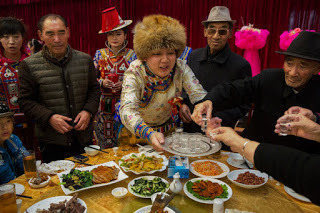
In September, the paper published an article about the
"The history of the Yugurs tells of the wax and wane and missing of cultures, dictated by geography and migration and the choices made by societies. The influence of a variety of nomadic steppe cultures in what is today northern China is a towering part of Asian history up the the 20th century," writes reporter Edward Wong.
Following the historical complexity of these cultures and their religions requires a Ph.D. in cultural anthropology, and even that might not be enough, but the end result is clear. "We don't have the written language anymore," said a manager of a handicraft workshop who once worked in the Sunan Country cultural office. "If we don't preserve the oral language, then it will quickly disappear. If we don't preserve handmade crafts or the techniques of making things by hand, then there's nothing special about us." (And what's so special about Western culture, one might ask).
In December, Jon Emont and Surgey Ponomarev wrote in The Times about endemic Mentawai people on the Mentawai Islands on Indonesia. Many of these people still live in the forest, and some of those who have relocated to villages on the outskirts of the forest want to go back. Noting that he would soon leave his wife, children and everything else to return to the forest and care for his aging parents who refuse to leave, Petrus Sekalour said, "Personally I prefer living in the forest. I'm happier there. I don't have to stress about finding work every day." Or finding something to eat or someone to talk to.
According to the article, the Mentawai traditional religion is not affected in any way by Christian, Buddhist, Hindu, nor Muslim beliefs. Even with Western medical care available, the forest Mentawai still rely on shamans. They tend pigs and carry on without all the trappings of Western culture that we think everyone wants. But they don't. Why don't they? "The older generation is happier than we are," says Mr. Sekaliou, which might be a hint.
This then is the real anthropological lesson. Not only are there other cultures and other lifestyles in operation across the globe, some of those people have it better than we do. Sometimes a lot better, all things considered.

It's also easy to think that other kinds of lifeways disappeared long ago, that there are no more hunter and gatherers, no more people living in the depths of forests or the plains of the steppe, nobody roaming around with herds of animals, or that no one is actually planting their own crops as a way to eat other than make money.
But none this is true.
Anthropologists are there to remind us that there are many ways to make a living, and that some of these ways have been around a lot longer than the Industrial Revolution. More interesting, and less academic, The New York Times also keeps reminding us there's a big world out there and we are only one small part of it.

In September, the paper published an article about the
"The history of the Yugurs tells of the wax and wane and missing of cultures, dictated by geography and migration and the choices made by societies. The influence of a variety of nomadic steppe cultures in what is today northern China is a towering part of Asian history up the the 20th century," writes reporter Edward Wong.
Following the historical complexity of these cultures and their religions requires a Ph.D. in cultural anthropology, and even that might not be enough, but the end result is clear. "We don't have the written language anymore," said a manager of a handicraft workshop who once worked in the Sunan Country cultural office. "If we don't preserve the oral language, then it will quickly disappear. If we don't preserve handmade crafts or the techniques of making things by hand, then there's nothing special about us." (And what's so special about Western culture, one might ask).
In December, Jon Emont and Surgey Ponomarev wrote in The Times about endemic Mentawai people on the Mentawai Islands on Indonesia. Many of these people still live in the forest, and some of those who have relocated to villages on the outskirts of the forest want to go back. Noting that he would soon leave his wife, children and everything else to return to the forest and care for his aging parents who refuse to leave, Petrus Sekalour said, "Personally I prefer living in the forest. I'm happier there. I don't have to stress about finding work every day." Or finding something to eat or someone to talk to.
According to the article, the Mentawai traditional religion is not affected in any way by Christian, Buddhist, Hindu, nor Muslim beliefs. Even with Western medical care available, the forest Mentawai still rely on shamans. They tend pigs and carry on without all the trappings of Western culture that we think everyone wants. But they don't. Why don't they? "The older generation is happier than we are," says Mr. Sekaliou, which might be a hint.
This then is the real anthropological lesson. Not only are there other cultures and other lifestyles in operation across the globe, some of those people have it better than we do. Sometimes a lot better, all things considered.

Published on January 07, 2017 14:00
August 2, 2016
Play Hookey, Please
Psychologist and baby mind expert Alison Gopnik is an anthropologist, even though she might not know it.
 Ok, so this is Margaret Mead not Alison Gopnik, but you get the point.While reading Gopnik's recent article on how kids learn I found myself nodding my head over and over because she totally "gets" that kids don't learn like adults in Western culture think they learn, or think they should learn.
Ok, so this is Margaret Mead not Alison Gopnik, but you get the point.While reading Gopnik's recent article on how kids learn I found myself nodding my head over and over because she totally "gets" that kids don't learn like adults in Western culture think they learn, or think they should learn.[image error]
Sure, we can make them go to school at three years of age, we can make them sit at desks and quietly listen, but really they would learn better, faster, and more intelligently if we simply left them alone.
Gopnik cites several studies of how even babies have a sense of complex physics, and cause and effect. Their innate creativity and puzzle solving skills are simply deadened by all that school.
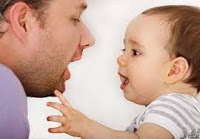 Babies and little kids are, in fact, always watching, listening, hearing and usually imitating, navigating what its means to be a little human on the way to being a big human.
Babies and little kids are, in fact, always watching, listening, hearing and usually imitating, navigating what its means to be a little human on the way to being a big human. And we in Western culture are so stuck on children growing up to be "successful" in our information age that we push them into a formal school settings that they really don't need.
And we in Western culture are so stuck on children growing up to be "successful" in our information age that we push them into a formal school settings that they really don't need.How boring. How dull. And just the thing to turn off a young mind to really learning. Kids have to fight to learn in spite of the adults.
I say give any kid a giant cardboard box and then leave the room and come back an hour or two later and see what happens. And that kid might just end up going to Columbia University, and changing the world.
[image error]
Published on August 02, 2016 15:26
July 13, 2016
Babies In Contrasting Western Cultures
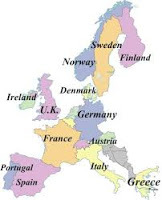 We tend to think of Western culture as one big group that stretches from North America across the Atlantic to Europe (and I must include Great Britain separately since they are no longer part of Europe). But in truth, this is not one big culture. In fact, there are a zillions of sub-cultures within Western culture.
We tend to think of Western culture as one big group that stretches from North America across the Atlantic to Europe (and I must include Great Britain separately since they are no longer part of Europe). But in truth, this is not one big culture. In fact, there are a zillions of sub-cultures within Western culture.The multiculturalism of Western culture came into sharp focus the past few weeks with two news article about babies. It's amazing how often babies highlight cultural differences in parenting philosophy, belief systems, and societal goals.
 I found the article on Finnish babies going home in boxes quite charming. Even more charming is the fact that Finns get 10 months of paid leave to be parents and guess what, Finland has the lowest infant mortality in the world (let's contrast that with the US with a rate of 26th of industrialized nations)
I found the article on Finnish babies going home in boxes quite charming. Even more charming is the fact that Finns get 10 months of paid leave to be parents and guess what, Finland has the lowest infant mortality in the world (let's contrast that with the US with a rate of 26th of industrialized nations)One hospital in the US is also providing baby boxes but in this case, the boxes have been politicized and aimed at low income women suggesting that they don't know how to be good mothers. In general, the baby boxes also beg the question of safe co-sleeping which is, of course, too bad but that's another example of US fear mongering.
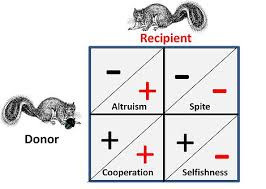 And so to the the other bit of Western subculture, the parenting advice machine. This month it comes in the form of an advice book that suggests we use game theory to parent our kids (read manipulate). Thats right, prisoners dilemma and such to get the kids to go to bed.
And so to the the other bit of Western subculture, the parenting advice machine. This month it comes in the form of an advice book that suggests we use game theory to parent our kids (read manipulate). Thats right, prisoners dilemma and such to get the kids to go to bed.I don't know about you, but I really don't have the time or the math skills of game theory and will just continue with the tried and true, hardly ever successful, strategy of explaining, discussing, begging and threatening to manipulate my child.

Perhaps if she had come home in a free box and I had been given 10 months of paid leave, I wouldn't even have to do that.
Published on July 13, 2016 03:44
June 24, 2016
Internal Brexit
The U.K leaving the E.U. is a moment in history, and another moment on the passport queue for those leaving the E.U. and going, say, to Scotland.
 Hardwood Hospital, foto by Abandoned Scotland
Hardwood Hospital, foto by Abandoned Scotland
But abandonments are nothing to to the U.K. and that brings me to my absolutely favorite website, Abandoned Scotland.
I'd been watching their videos for a few years, marveling at the abandoned hospitals, schools, castles and such, as well being stunned by the fabulous production of their visuals accompanied by eerie music. Clicking the full screen mode always bought such peace and beauty for a few minutes. And of course these shots also made me miss Scotland and wish I could go on adventures with these guys.
Then for a few years, nothing, and I felt abandoned. But I'm glad to say Abandoned Scotland is back with this incredible video of Hartwood Hospital. Now they have drones and it is glorious to rise over empty spaces surrounded by formidable building walls, to go deep into buildings where there is nothing but what's left over, to wonder who lived here, who died here, and ask where are they now.
Abandoned Scotland photographs and videos are the story of history and loss, building and then leaving only the stamp of human suffering or happiness or past glory and riches behind. And all in Scotland which is one gorgeous country.
I wrote to AS to say I liked their new website and loved their work, I no longer felt abandoned, and sent them some abandoned Philadelphia, a defunct steam plant by the folks at Hidden City Philadelphia. [image error] They wrote back to say they liked my work (which it was not) and they encouraged me to keep it up. They pointed out that Scotland's abandoned places are out the way, set in woods and such and they have no huge abandoned mills such in the the U.S. which are sometimes still set in cities (such as Bethlehem PA)
That comment brought me to idea of Abandoned Venice, the plague hospital islands left to rot, the enclosed forbidden palazzi gardens, the medieval buildings boarded up, the monasteries still in use but not open to the public.
 A small city, not in a woods, and yet much of it abandoned for centuries and still standing.
A small city, not in a woods, and yet much of it abandoned for centuries and still standing.
Now all I need is a drone and permission to use it over Venice. And then we can be reminded again of how amazing the human footprint has been and how in a nanosecond nature its ready to take it all back.
And then we can be reminded again of how amazing the human footprint has been and how in a nanosecond nature its ready to take it all back.
 Hardwood Hospital, foto by Abandoned Scotland
Hardwood Hospital, foto by Abandoned ScotlandBut abandonments are nothing to to the U.K. and that brings me to my absolutely favorite website, Abandoned Scotland.
I'd been watching their videos for a few years, marveling at the abandoned hospitals, schools, castles and such, as well being stunned by the fabulous production of their visuals accompanied by eerie music. Clicking the full screen mode always bought such peace and beauty for a few minutes. And of course these shots also made me miss Scotland and wish I could go on adventures with these guys.
Then for a few years, nothing, and I felt abandoned. But I'm glad to say Abandoned Scotland is back with this incredible video of Hartwood Hospital. Now they have drones and it is glorious to rise over empty spaces surrounded by formidable building walls, to go deep into buildings where there is nothing but what's left over, to wonder who lived here, who died here, and ask where are they now.
Abandoned Scotland photographs and videos are the story of history and loss, building and then leaving only the stamp of human suffering or happiness or past glory and riches behind. And all in Scotland which is one gorgeous country.
I wrote to AS to say I liked their new website and loved their work, I no longer felt abandoned, and sent them some abandoned Philadelphia, a defunct steam plant by the folks at Hidden City Philadelphia. [image error] They wrote back to say they liked my work (which it was not) and they encouraged me to keep it up. They pointed out that Scotland's abandoned places are out the way, set in woods and such and they have no huge abandoned mills such in the the U.S. which are sometimes still set in cities (such as Bethlehem PA)
That comment brought me to idea of Abandoned Venice, the plague hospital islands left to rot, the enclosed forbidden palazzi gardens, the medieval buildings boarded up, the monasteries still in use but not open to the public.

 A small city, not in a woods, and yet much of it abandoned for centuries and still standing.
A small city, not in a woods, and yet much of it abandoned for centuries and still standing.Now all I need is a drone and permission to use it over Venice.
 And then we can be reminded again of how amazing the human footprint has been and how in a nanosecond nature its ready to take it all back.
And then we can be reminded again of how amazing the human footprint has been and how in a nanosecond nature its ready to take it all back.
Published on June 24, 2016 17:44
June 21, 2016
Humans on the Move
I just moved to Philadelphia after 29 years in Ithaca, NY.
I left this:

For this:
In Ithaca before I left, and in Philadelphia after I arrived, any number of people asked me why I was doing this. I had my reasons—boredom of the same scenery and walks, not such a great place for a single woman, tired of the weather and shoveling snow, the ability to give up my car, living in a factory loft apartment on a cobblestone street, and that 12 minute $7 train to the Philadelphia International airport. Not to mention the access to all sorts of culture and great food in a cool city like Philly.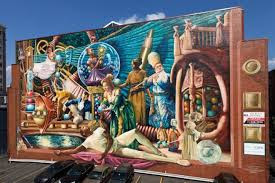
More often than not, people in Ithaca and sometimes in Philadelphia, were completely confused that I would move at all. And yet people move all the time, all over the place. And it seems like being on the move is part of human nature.
I was reminded of this last week when reading the news of a new cache of the undersized human species named Homo florisensis, or the Hobbits. Although the earlier spectacular and curious finds of these small sized members of our genus where dated between 60,000 to 100,000 years old, the new group appears even older—about 700,000 years old.
In other words, by 700,000 years ago humans had moved out of Africa and across the globe and landed in Indonesia. That's quite a walk.


Animals migrate, and often move quickly, when they're following food, food that is often on the hoofand moving too. Humans migrated out of Africa in waves, again and again over the centuries beginning about a 1000,000 years ago, eventually becoming the most geographically spread mammal.
In recent times people also migrate for jobs, which is sort of like looking for food, and they migrate for social and political reasons, but that's flight under pressure and fear, not looking for a sandwich.
But when one moves voluntarily, we are following a human urge to find something better, more meaty, and a change of view.
I left this:

For this:

In Ithaca before I left, and in Philadelphia after I arrived, any number of people asked me why I was doing this. I had my reasons—boredom of the same scenery and walks, not such a great place for a single woman, tired of the weather and shoveling snow, the ability to give up my car, living in a factory loft apartment on a cobblestone street, and that 12 minute $7 train to the Philadelphia International airport. Not to mention the access to all sorts of culture and great food in a cool city like Philly.

More often than not, people in Ithaca and sometimes in Philadelphia, were completely confused that I would move at all. And yet people move all the time, all over the place. And it seems like being on the move is part of human nature.
I was reminded of this last week when reading the news of a new cache of the undersized human species named Homo florisensis, or the Hobbits. Although the earlier spectacular and curious finds of these small sized members of our genus where dated between 60,000 to 100,000 years old, the new group appears even older—about 700,000 years old.
In other words, by 700,000 years ago humans had moved out of Africa and across the globe and landed in Indonesia. That's quite a walk.


Animals migrate, and often move quickly, when they're following food, food that is often on the hoofand moving too. Humans migrated out of Africa in waves, again and again over the centuries beginning about a 1000,000 years ago, eventually becoming the most geographically spread mammal.
In recent times people also migrate for jobs, which is sort of like looking for food, and they migrate for social and political reasons, but that's flight under pressure and fear, not looking for a sandwich.
But when one moves voluntarily, we are following a human urge to find something better, more meaty, and a change of view.
Published on June 21, 2016 04:36
September 25, 2015
Our Baby-Kissing Pope
One Wednesday eighteen months ago in Rome (well, the Vatican City), my daughter and I stood outside the barricades (well, pieces of flimsy wood that we could have broken with our fingers) in Saint Peter's square (well, it's more round) to wait for Pope Francis to come into view.
I, the most sarcastic of ex-catholics, had to be talked into this by my daughter, who I raised with no religious education at all.

Expecting Il Papa to come out of the basilica and wave from afar, we we stunned to hear yelling as a white open jeep headed our way through a path in the crowd. And there he was, the man who apparently loves his job more than anyone, waving and smiling and receiving all manner of swag from the crowd and tossing is all into the back of the jeep with a practiced hand (we assumed he later sold it all on eBay). The guy also grabbed any glass of anything offered and took a sip, not the least bit concerned that he might get a cold from some stranger.

His progress through the crowd was rather stop-and -go because the driver was apparently under standing orders to "break for babies." Any kid that could be lifted by the security detail was offered up to the Pontiff. A kiss, a smile and back the babies went, the same baby but blessed forever by a really cool guy.

We got the feeling the Pope would have liked to put those little ones in his tiny jeep and give them a joy ride through the crowd, all of them laughing. But only if he could drive.

I was tempted to offer up my 16-year-old, but I can't life her anymore. For years I had warned her about advances and kisses from strangers and there I was ready to hand her over to this elderly man with the most pleasant face on earth. I was also startled to find that I listen to his sermon on reconciliation and later even acted on it, obeying the Pope for the first time in, say, 45 years.

That day I was also confused by my cheery enthusiasm, my yelling along with the crowd, my rubbernecking to get the best glimpse of the Pope, my tip-toe-excitement at seeing him in person.
When I bought his up to my daughter she said, with a practiced cynical eye, at least when it come to her mother, "Mob violence." Indeed.
My daughter and I now consider Pope Frances a "good friend," "our" Pope, as it were. And with his visit to the US, I have been tickled by the secret service and the NY Times commenting on the Pope's instance on kissing babies and how that's a security nightmare. Too cute.

What I say is we got ourselves a baby-kissing Pope. It doesn't get any better, or more meaningful, or more hopefully, than that. When humanity is at its worst, we have this guy to make us feel better. And to tell us to work at getting better.

I, the most sarcastic of ex-catholics, had to be talked into this by my daughter, who I raised with no religious education at all.

Expecting Il Papa to come out of the basilica and wave from afar, we we stunned to hear yelling as a white open jeep headed our way through a path in the crowd. And there he was, the man who apparently loves his job more than anyone, waving and smiling and receiving all manner of swag from the crowd and tossing is all into the back of the jeep with a practiced hand (we assumed he later sold it all on eBay). The guy also grabbed any glass of anything offered and took a sip, not the least bit concerned that he might get a cold from some stranger.

His progress through the crowd was rather stop-and -go because the driver was apparently under standing orders to "break for babies." Any kid that could be lifted by the security detail was offered up to the Pontiff. A kiss, a smile and back the babies went, the same baby but blessed forever by a really cool guy.

We got the feeling the Pope would have liked to put those little ones in his tiny jeep and give them a joy ride through the crowd, all of them laughing. But only if he could drive.

I was tempted to offer up my 16-year-old, but I can't life her anymore. For years I had warned her about advances and kisses from strangers and there I was ready to hand her over to this elderly man with the most pleasant face on earth. I was also startled to find that I listen to his sermon on reconciliation and later even acted on it, obeying the Pope for the first time in, say, 45 years.

That day I was also confused by my cheery enthusiasm, my yelling along with the crowd, my rubbernecking to get the best glimpse of the Pope, my tip-toe-excitement at seeing him in person.
When I bought his up to my daughter she said, with a practiced cynical eye, at least when it come to her mother, "Mob violence." Indeed.
My daughter and I now consider Pope Frances a "good friend," "our" Pope, as it were. And with his visit to the US, I have been tickled by the secret service and the NY Times commenting on the Pope's instance on kissing babies and how that's a security nightmare. Too cute.

What I say is we got ourselves a baby-kissing Pope. It doesn't get any better, or more meaningful, or more hopefully, than that. When humanity is at its worst, we have this guy to make us feel better. And to tell us to work at getting better.

Published on September 25, 2015 11:32
April 8, 2015
Made in Italy
I haven't posted for a while because I had nothing to say....or I was busy. Really, who cares?
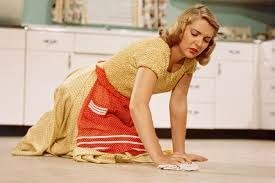
But then I came across these books about shopping in Florence and they awakened memories of our three months there in 2012. That's right, a shopping guide triggered my past. If only I had had these book back then. Great food. Great art. Great times. Great shopping. Great everything.
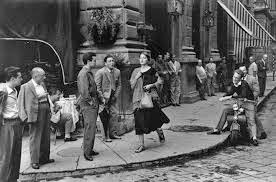
Laura Morelli knows her stuff. And I mean stuff, Italian stuff.
And she is giving a few of them away: a Rafflecopter giveaway
To me, I hope. I am so ready to get on a plane to Italy.

But then I came across these books about shopping in Florence and they awakened memories of our three months there in 2012. That's right, a shopping guide triggered my past. If only I had had these book back then. Great food. Great art. Great times. Great shopping. Great everything.

Laura Morelli knows her stuff. And I mean stuff, Italian stuff.
And she is giving a few of them away: a Rafflecopter giveaway
To me, I hope. I am so ready to get on a plane to Italy.
Published on April 08, 2015 08:23
Made in Itlay
I haven't posted for a while because I had nothing to say....or I was busy. Really, who cares?

But then I came across these books about shopping in Florence and they awakened memories of our three months there in 2012. That's right, a shopping guide triggered my past. If only I had had these book back then. Great food. Great art. Great times. Great shopping. Great everything.
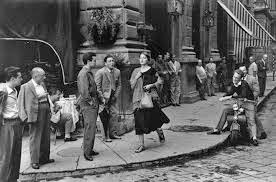
Laura Morelli knows her stuff. And I mean stuff, Italian stuff.
And she is giving a few of them away: a Rafflecopter giveaway
To me, I hope. I am so ready to get on a plane to Italy.

But then I came across these books about shopping in Florence and they awakened memories of our three months there in 2012. That's right, a shopping guide triggered my past. If only I had had these book back then. Great food. Great art. Great times. Great shopping. Great everything.

Laura Morelli knows her stuff. And I mean stuff, Italian stuff.
And she is giving a few of them away: a Rafflecopter giveaway
To me, I hope. I am so ready to get on a plane to Italy.
Published on April 08, 2015 08:23
December 4, 2014
Stop, Look, and Listen
Sometimes I am asked to review or write blurbs for books about parents, caretakers, and kids.
I have to admit that I haven't read many parenting books, except for two skinny ones on teenagers and how to cope with messy rooms, safety issues and such. My 17 year old recently told me she had read them as well, perhaps before I did, so she knew what was coming. There they sat on the shelf, so why not get a jump on Mom? The books forgot to add a section on wily teenagers and how to get a jump on them.

Today I am looking through Susan Newman's Little Things Long Remembered , which is essentailly a list of hints on how busy working parents can remember that they have kids. Apparently, the kids are "little things" long forgotten.

Open this slim book and hit on concise tidbits to put into action. The action is basically to turn off your cell phone and do something with or for your child.
Yes, there are lots of specific ideas about trips and treats, or making some craft together, but overall this is a book for adults who are too busy, self-absorbed, and frazzled to even remember they have children.
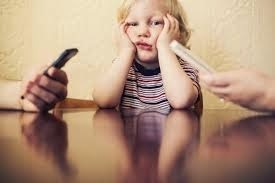
Many parents will find it useful, but I found it to be a depressing statement about parenting in Western culture.
Do we really need to be reminded, for example, to "act silly" (p. 31), talk to kids while we ride in the car together (57), or "come home early to be with a sick kid"(p.92)?
I chose these three examples randomly but imagine 135 pages of such sadly obvious hints.
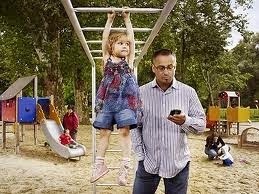
I'd like to believe that this is an unnecessary book, that all parents and caretakers routinely take time out of their days and nights to be with their kids, to interact with them, because that comes naturally, because that's what it means to be a parent or caretaker. If not that, then what?

In my worst moments, like when reading this book, I also wonder if we are, as a culture, at risk of inflating the self-esteem of our kids with the inane phrase "good job" for some tiny achievement while ignoring everything else about them, the good as well as the bad.

It seems to me that parenting can best be summed up not in a list of cloying advice but in the very words we use to teach children how to cross the street: Stop. Look. And Listen.

Stop. Look. And listen to the best days of your life. That's all you and they need.
Sure, we all get busy and preoccupied sometimes and if you need a book to get back on track as an engaged parent, try this one. Skim a few pages and then drop it and get back to being a parent.
I have to admit that I haven't read many parenting books, except for two skinny ones on teenagers and how to cope with messy rooms, safety issues and such. My 17 year old recently told me she had read them as well, perhaps before I did, so she knew what was coming. There they sat on the shelf, so why not get a jump on Mom? The books forgot to add a section on wily teenagers and how to get a jump on them.

Today I am looking through Susan Newman's Little Things Long Remembered , which is essentailly a list of hints on how busy working parents can remember that they have kids. Apparently, the kids are "little things" long forgotten.

Open this slim book and hit on concise tidbits to put into action. The action is basically to turn off your cell phone and do something with or for your child.
Yes, there are lots of specific ideas about trips and treats, or making some craft together, but overall this is a book for adults who are too busy, self-absorbed, and frazzled to even remember they have children.

Many parents will find it useful, but I found it to be a depressing statement about parenting in Western culture.
Do we really need to be reminded, for example, to "act silly" (p. 31), talk to kids while we ride in the car together (57), or "come home early to be with a sick kid"(p.92)?
I chose these three examples randomly but imagine 135 pages of such sadly obvious hints.

I'd like to believe that this is an unnecessary book, that all parents and caretakers routinely take time out of their days and nights to be with their kids, to interact with them, because that comes naturally, because that's what it means to be a parent or caretaker. If not that, then what?

In my worst moments, like when reading this book, I also wonder if we are, as a culture, at risk of inflating the self-esteem of our kids with the inane phrase "good job" for some tiny achievement while ignoring everything else about them, the good as well as the bad.

It seems to me that parenting can best be summed up not in a list of cloying advice but in the very words we use to teach children how to cross the street: Stop. Look. And Listen.

Stop. Look. And listen to the best days of your life. That's all you and they need.
Sure, we all get busy and preoccupied sometimes and if you need a book to get back on track as an engaged parent, try this one. Skim a few pages and then drop it and get back to being a parent.
Published on December 04, 2014 05:20
November 5, 2014
Community
Last summer I spent a month in Venice and one night, as a rain storm approached (la tempesta), I had to go out on the tiny balcony and retrieve my laundry. Yes, that's my laundry in the foto below, the line with the long sheet and blue towel.
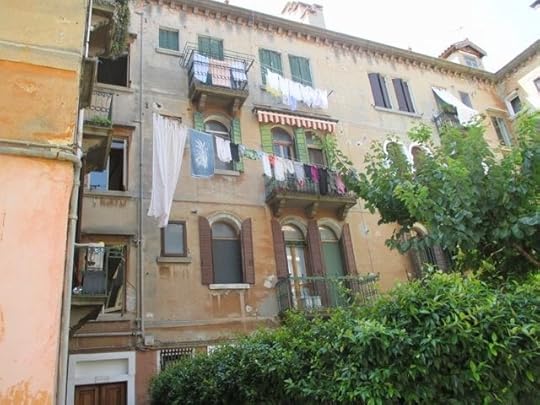
The wind was blowing and howling, but over the sound of nature I also realized that someone was speaking to me. Looking across the courtyard I saw a man in an apartment at the same level as mine. He was at his window offering me his opinion about the storm. So we chatted.
This was one of my best moments in Venice, something I will always remember because I live in a culture where a stranger wouldn't dare converse with someone across the courtyard, or street, especially at night, in a storm, and especially if you were a woman and he was a man. It would seem creepy instead of normal and friendly.
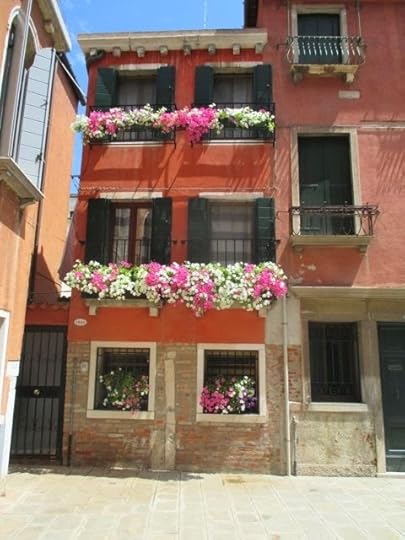
Why is it like that in Venice? Sure, this tiny city is more tightly packed than my town, and everyone knows every else because they walk everywhere and stop and talk. But Venice is also special because it has a very long history of community spirit.
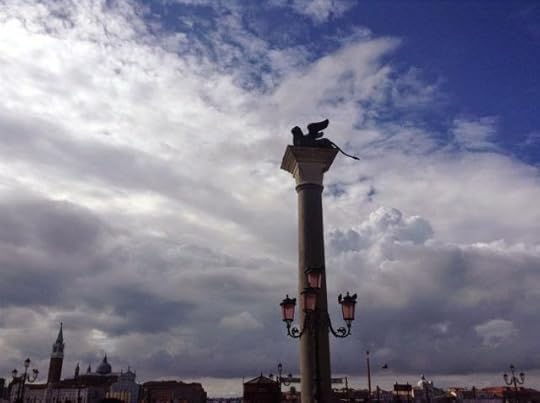
From the time Venice was established in the lagoon in the 800s to the fall of the Venetian Republic in 1797, its citizens have banded together for the greater good of La Serenissima, The Republic of Venice.
Although there were social classes from patricians to servants, everyone operated within an interwoven network of neighborhoods, classes, churches, and service clubs. And they did so, made a cohesive dedicated social whole, because this was a vulnerable nation surrounded by water.
But more important, Venice was a city based on commerce and everyone worked hard, even the aristocracy, to make money.
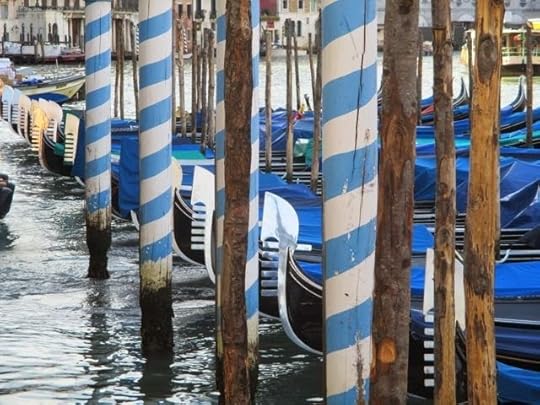
That history of banding together to make money informs everything in Venice today, from the gondolieri hawking rides to the cost of public toilets for non-Veneitians. It also informs the friendliness of Venetians if you make an effort to see the city and be part of the life.
For one quick moment as I took in my laundry, I felt just a little bit Venetian. It was so cool.
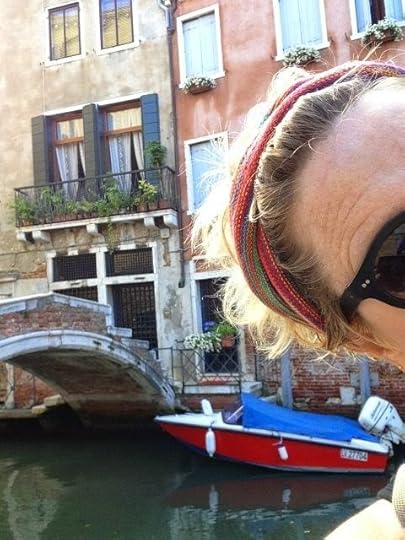

The wind was blowing and howling, but over the sound of nature I also realized that someone was speaking to me. Looking across the courtyard I saw a man in an apartment at the same level as mine. He was at his window offering me his opinion about the storm. So we chatted.
This was one of my best moments in Venice, something I will always remember because I live in a culture where a stranger wouldn't dare converse with someone across the courtyard, or street, especially at night, in a storm, and especially if you were a woman and he was a man. It would seem creepy instead of normal and friendly.

Why is it like that in Venice? Sure, this tiny city is more tightly packed than my town, and everyone knows every else because they walk everywhere and stop and talk. But Venice is also special because it has a very long history of community spirit.

From the time Venice was established in the lagoon in the 800s to the fall of the Venetian Republic in 1797, its citizens have banded together for the greater good of La Serenissima, The Republic of Venice.
Although there were social classes from patricians to servants, everyone operated within an interwoven network of neighborhoods, classes, churches, and service clubs. And they did so, made a cohesive dedicated social whole, because this was a vulnerable nation surrounded by water.
But more important, Venice was a city based on commerce and everyone worked hard, even the aristocracy, to make money.

That history of banding together to make money informs everything in Venice today, from the gondolieri hawking rides to the cost of public toilets for non-Veneitians. It also informs the friendliness of Venetians if you make an effort to see the city and be part of the life.
For one quick moment as I took in my laundry, I felt just a little bit Venetian. It was so cool.

Published on November 05, 2014 09:10



